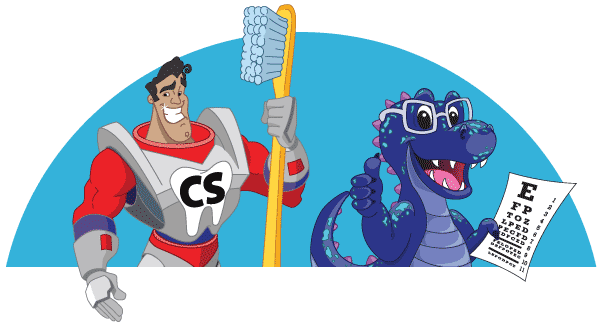Vision
Vision and ADD/ADHD in Children

Many of the symptoms of ADD (Attention Deficit Disorder) and ADHD (Attention Deficit Hyperactivity Disorder) that impact a child’s school performance are also common symptoms of an untreated vision problem, and children with vision problems are twice as likely to be diagnosed with ADHD as children with normal vision. Some examples of symptoms common to both conditions include things like:
- Short attention span
- Not following through with instructions
- Avoiding tasks requiring sustained mental effort
- Fidgeting
- Impulsiveness
- Poor reading comprehension and spelling
- Poor recall of visually presented material
School screenings only check for a child’s ability to see from a distance, essentially, their ability to see the blackboard. Academic success, however, requires 17 different visual skills not detected in basic screenings including eye coordination, eye tracking, depth perception and more.
Researchers at the National Survey of Children’s Health (NCSH) conducted a study of more than 75,000 children ages 4 to 17. Sixteen percent of children with uncorrected vision problems had received an ADHD diagnosis compared to just 8% of children with normal vision. Many believe that the relationship between vision and ADHD is not causal, but rather the result of misdiagnosis. Children who struggle in school because of vision impairment may adopt behaviors common to ADHD as a coping mechanism. If your child has been diagnosed with ADD or ADHD or you fear they may have a learning disorder, make sure to schedule a comprehensive vision exam to rule out the possibility that the symptoms are not related to a treatable vision problem. There are some common signs parents can look for that might indicate that a child has a vision problem that is impacting their learning, including:
- Homework takes longer than expected
- Inability to concentrate for more than short intervals
- Difficulty reading, writing or drawing
- Complains of eye strain, headaches or blurred vision
- Frequent squinting or eye rubbing
Eighty percent of what children learn comes through their visual processing of information, and vision problems are one of the most prevalent childhood disabilities according to the Vision Council. Despite the important linkage between vision and learning 86% of children enter school having never had a comprehensive vision exam. The American Academy of Ophthalmology and the American Optometric Association both recommend a first eye exam for babies between 6 and 12 months and then once every 12 to 24 months after that.

